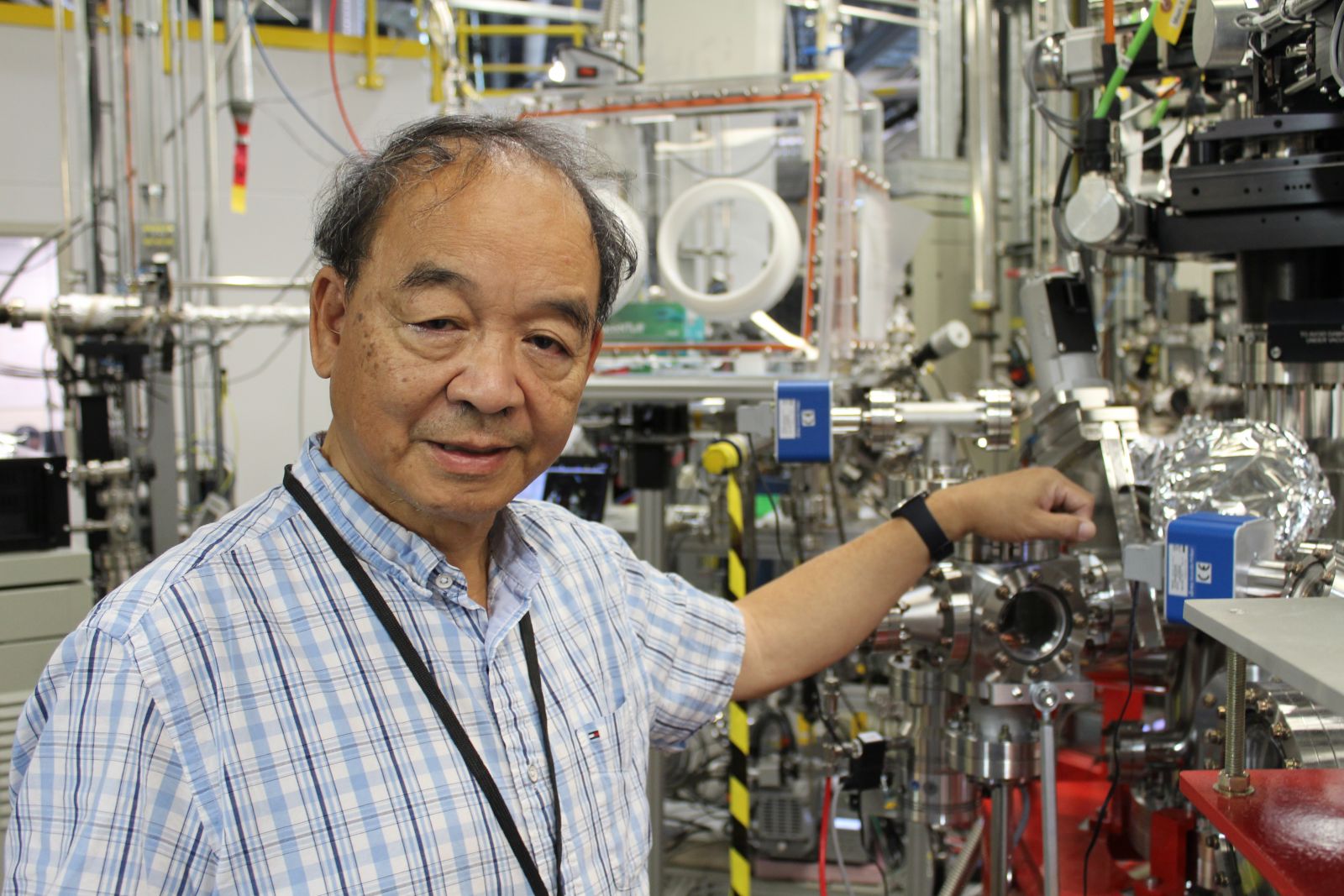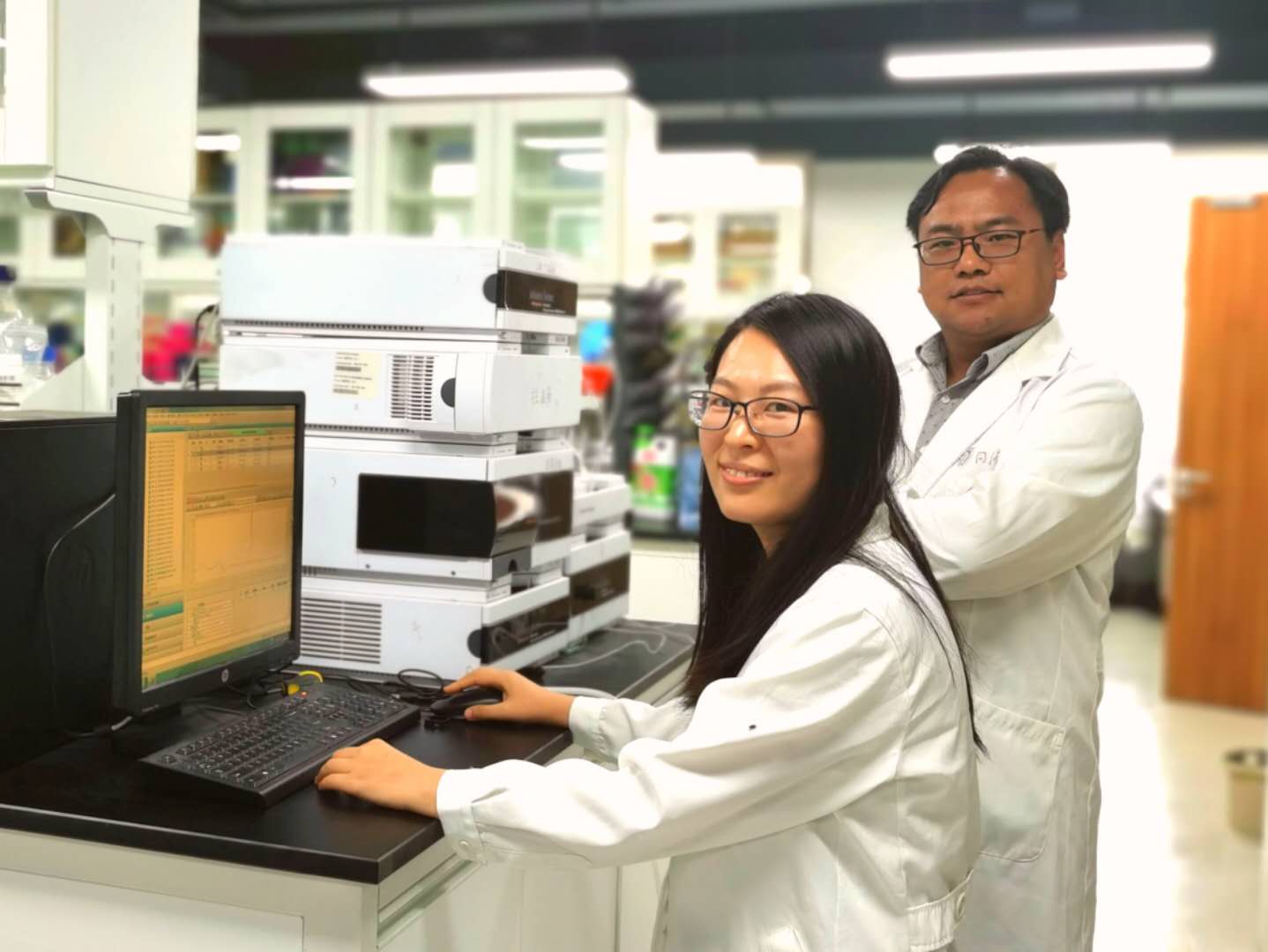Promising new drug carrier could improve bone repair and cancer treatments
Western University and Shanghai Institute of Ceramics researchers used the CLS to explore a promising drug carrier that could be used to deliver cancer treatments and therapeutics for severe injuries.
By Erin MatthewsYing-Ying Jiang (front) and Prof. Chen collecting data at Tongji University in China.
Researchers from Western University and the Shanghai Institute of Ceramics, Chinese Academy of Sciences used the Canadian Light Source (CLS) at the University of Saskatchewan to explore a promising drug carrier that could be used to deliver cancer treatments and therapeutics for severe injuries.

Their work advances drug carrier technology to make the carrier more compatible with our bodies. This allows the drug carrier to deliver the desired treatment precisely to a tumor, or to allow a slower release of the medicine.
In a new paper published in The Royal Society of Chemistry, the team investigated using calcium phosphate as a potential drug carrier. Their approach uses phosphate from the biomolecule that stores and transports energy in our cells, which allows the carrier to be more compatible with the human body.
Using this drug delivery system solves the limitations of other carriers, including biocompatibility and toxicity. Their carrier is highly compatible with our biological system, allowing for a better response while also being non-toxic.
“Calcium phosphate is an important biomaterial in bones and teeth. If you can use this material as a drug carrier then you don’t need to worry about what happens after it is done with delivery,” said Tsun-Kong (TK) Sham, Professor of Chemistry at Western University.

To use calcium phosphate as a carrier, the researchers had to assemble it into nanostructures that could act as buckets for therapeutic drugs.
“The tricky thing is how you assemble the molecules into porous nanostructures. The porous particle is most effective in carrying and delivering the drugs. It requires a lot of trial and error,” said Sham.
Most of the work was conducted by Ying-Ying Jiang, a former PhD student from the Shanghai Institute of Ceramics, Chinese Academy of Sciences, who worked in Sham’s lab during the last year of her degree. This is a rekindled collaboration that began in 1999 when her supervisor Ying-Jie Zhu traveled to Western University to work with Sham.
By conducting experiments on the SXRMB, VLS-PGM, SGM and SM beamlines at the CLS, the team focused on observing the interactions between drug molecules and the calcium phosphate delivery systems. The researchers were able to see down to the molecular level and study the interactions between atoms.
Sham views synchrotrons as a powerful research tool and advocates for their use. He believes the CLS will get researchers engaged in the application of synchrotron techniques and will continue to assist new scientists with their research.
The next phase of the study will be to simulate the human body’s biological environment and determine if the drugs can be unloaded or delivered. This will allow the team to measure the rate of release and how it can be controlled.
Jiang, Ying-Ying, Zhi-Qiang Wang, Jia-Tang Chen, Jun Li, Ying-Jie Zhu, Li-Jia Liu, Xiao-Xuan Guo et al. "Tracking the interaction of drug molecules with individual mesoporous amorphous calcium phosphate/ATP nanocomposites–an X-ray spectromicroscopy study." Physical Chemistry Chemical Physics (2020). DOI: 10.1039/D0CP00797H.
For more information, contact:
Victoria Schramm
Communications Coordinator
Canadian Light Source
306-657-3516
victoria.schramm@lightsource.ca
